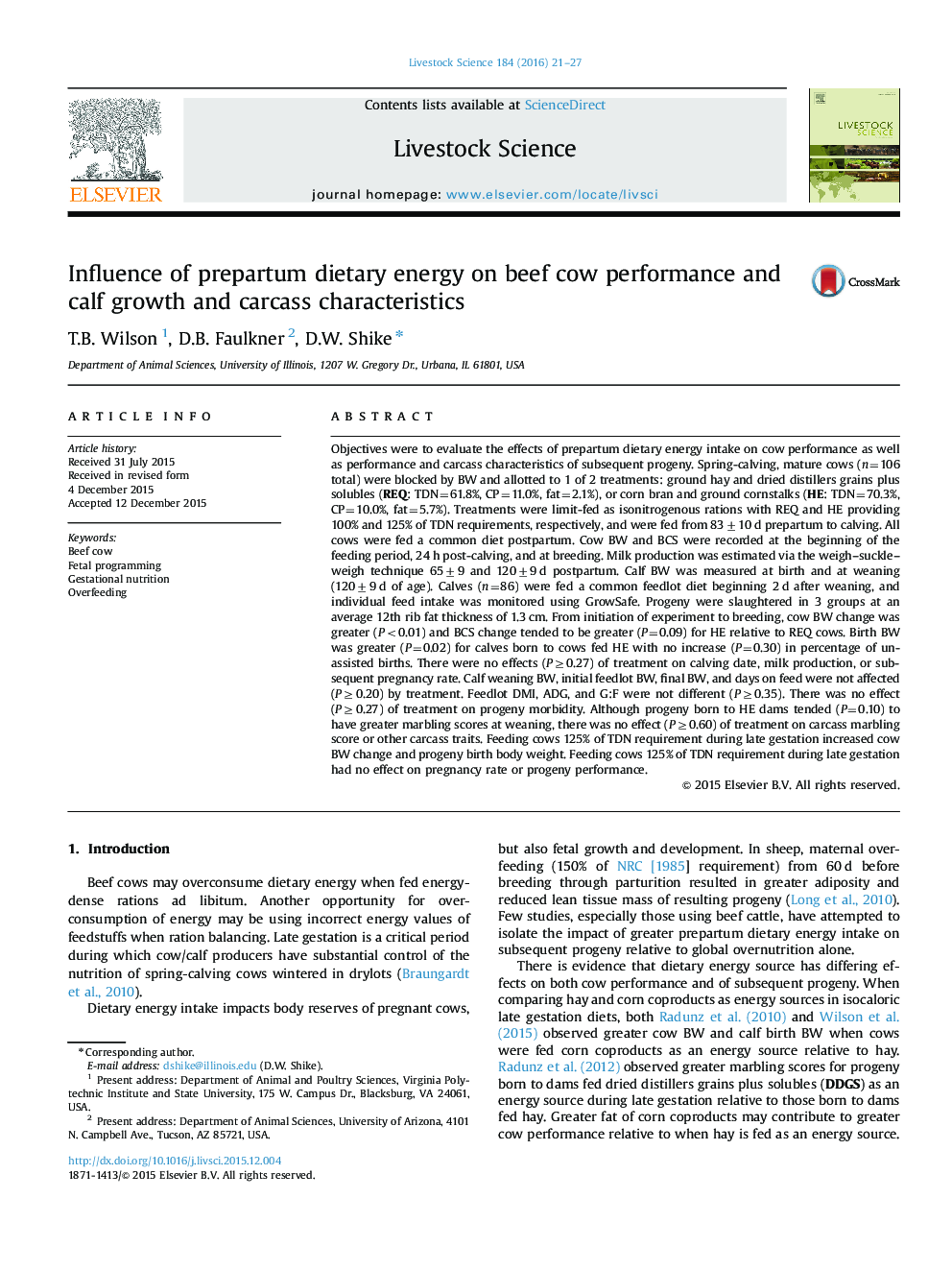| کد مقاله | کد نشریه | سال انتشار | مقاله انگلیسی | نسخه تمام متن |
|---|---|---|---|---|
| 2446974 | 1553948 | 2016 | 7 صفحه PDF | دانلود رایگان |
• Greater late gestation dietary energy increased cow body weight change.
• Greater late gestation dietary energy increased progeny birth body weight.
• Greater late gestation energy did not affect milk production or pregnancy rate.
• Greater late gestation dietary energy did not affect progeny growth performance.
• Greater late gestation energy did not affect progeny carcass characteristics.
Objectives were to evaluate the effects of prepartum dietary energy intake on cow performance as well as performance and carcass characteristics of subsequent progeny. Spring-calving, mature cows (n=106 total) were blocked by BW and allotted to 1 of 2 treatments: ground hay and dried distillers grains plus solubles (REQ: TDN=61.8%, CP=11.0%, fat=2.1%), or corn bran and ground cornstalks (HE: TDN=70.3%, CP=10.0%, fat=5.7%). Treatments were limit-fed as isonitrogenous rations with REQ and HE providing 100% and 125% of TDN requirements, respectively, and were fed from 83±10 d prepartum to calving. All cows were fed a common diet postpartum. Cow BW and BCS were recorded at the beginning of the feeding period, 24 h post-calving, and at breeding. Milk production was estimated via the weigh–suckle–weigh technique 65±9 and 120±9 d postpartum. Calf BW was measured at birth and at weaning (120±9 d of age). Calves (n=86) were fed a common feedlot diet beginning 2 d after weaning, and individual feed intake was monitored using GrowSafe. Progeny were slaughtered in 3 groups at an average 12th rib fat thickness of 1.3 cm. From initiation of experiment to breeding, cow BW change was greater (P<0.01) and BCS change tended to be greater (P=0.09) for HE relative to REQ cows. Birth BW was greater (P=0.02) for calves born to cows fed HE with no increase (P=0.30) in percentage of unassisted births. There were no effects (P≥0.27) of treatment on calving date, milk production, or subsequent pregnancy rate. Calf weaning BW, initial feedlot BW, final BW, and days on feed were not affected (P≥0.20) by treatment. Feedlot DMI, ADG, and G:F were not different (P≥0.35). There was no effect (P≥0.27) of treatment on progeny morbidity. Although progeny born to HE dams tended (P=0.10) to have greater marbling scores at weaning, there was no effect (P≥0.60) of treatment on carcass marbling score or other carcass traits. Feeding cows 125% of TDN requirement during late gestation increased cow BW change and progeny birth body weight. Feeding cows 125% of TDN requirement during late gestation had no effect on pregnancy rate or progeny performance.
Journal: Livestock Science - Volume 184, February 2016, Pages 21–27
